Solar Lighting for Historic Homes and Landscapes
For homeowners in historic districts like Boston’s Beacon Hill and landscape designers working within preservation guidelines, enhancing outdoor spaces with lighting requires careful consideration. Strict regulations often limit modifications to maintain the architectural integrity of historic homes, such as those in colonial or Victorian styles. Solar lighting offers a compliant, eco-friendly solution that avoids invasive installations while complementing the aesthetic of historic properties. This article explores tailored solar lighting solutions, including detachable solar lights, vintage-style solar lamps, and low-voltage solar systems, designed to meet preservation requirements. We’ll also provide a checklist for navigating historic preservation approvals and share real-world case studies of successful transformations.

Why Solar Lighting for Historic Homes?
Solar lighting is an ideal choice for historic properties due to its non-invasive nature and alignment with preservation principles. These lights eliminate the need for electrical wiring, which can be restricted in historic districts, and reduce environmental impact through renewable energy. For homeowners and landscape designers, solar lighting provides flexibility, sustainability, and compliance with strict regulations while enhancing outdoor spaces like gardens, patios, or pathways. By choosing designs that blend with colonial or Victorian aesthetics, you can illuminate your property without compromising its historical charm.
Detachable Solar Lights: Preserving Architectural Integrity
In historic districts, modifications must often be reversible to avoid permanent changes to protected structures. Detachable solar lights are designed to meet this “reversible modification” requirement, making them perfect for homeowners and designers navigating preservation regulations.
- Non-Invasive Installation: Detachable solar lights can be mounted using clips, magnetic bases, or adhesive strips that leave no lasting marks on facades, railings, or stonework. This ensures compliance with guidelines in areas like Beacon Hill, where drilling or permanent fixtures are often prohibited.
- Versatile Placement: These lights can be placed on garden walls, fence posts, or even tree branches, offering flexibility for illuminating pathways or highlighting architectural features without structural alterations.
- Weather Resilience: Look for detachable solar lights with IP65 or higher ratings to withstand rain, snow, or humidity, ensuring durability in the variable climates of historic regions like New England.
When selecting detachable solar lights, prioritize models with discreet solar panels that blend into the surroundings. For example, a compact panel tucked behind a lantern-style light preserves the historic aesthetic while ensuring efficient solar charging.
Vintage-Style Solar Lamps: Blending with Historic Aesthetics
Historic homes, particularly those in colonial or Victorian styles, demand lighting that complements their architectural character. Vintage-style solar lamps, crafted with materials like brass and designed to resemble kerosene lanterns, offer a seamless blend of modern technology and timeless design.
- Authentic Materials: Vintage-style solar lamps often feature brass, copper, or wrought iron finishes that mimic the look of 18th- or 19th-century lighting. These materials age gracefully, developing a patina that enhances the historic charm of properties in districts like Beacon Hill.
- Kerosene Lamp Aesthetics: Designs inspired by traditional oil or kerosene lanterns provide a warm, nostalgic glow that suits colonial or Victorian architecture. LED bulbs within these lamps replicate the soft flicker of candlelight, creating an inviting ambiance.
- Low Maintenance: Powered by solar energy, these lamps require no wiring or frequent bulb replacements, reducing upkeep for homeowners and designers focused on preserving historic properties.
When incorporating vintage-style solar lamps, consider placement along garden paths, near entryways, or on patios to highlight architectural details. Ensure the solar panel is positioned to receive at least 6 hours of direct sunlight daily for optimal performance, especially in shaded historic neighborhoods.
Low-Voltage Solar Systems: Navigating Electrical Restrictions
Historic preservation regulations often limit electrical modifications to avoid altering original wiring or structures. Low-voltage solar systems provide a compliant alternative, delivering reliable illumination without the need for extensive electrical work.
- No Electrical Permits Required: Unlike traditional lighting, low-voltage solar systems operate independently of a home’s electrical grid, eliminating the need for permits or inspections often required in historic districts.
- Scalable Solutions: These systems can power multiple lights, such as pathway markers or accent lights, through a single solar panel, making them ideal for larger landscapes or multi-feature designs.
- Energy Efficiency: Low-voltage solar systems use energy-efficient LEDs, ensuring long-lasting illumination even in areas with limited sunlight. Some models include battery backups for consistent performance during cloudy days.
For landscape designers, low-voltage solar systems offer flexibility to create cohesive lighting plans that highlight gardens, statues, or architectural elements while adhering to preservation guidelines. Always verify that the system’s components are rated for outdoor use to withstand environmental conditions.
Navigating Historic Preservation Approvals
Installing solar lighting in historic districts requires approval from local preservation commissions to ensure compliance with regulations. Below is a checklist to streamline the approval process for homeowners and designers:
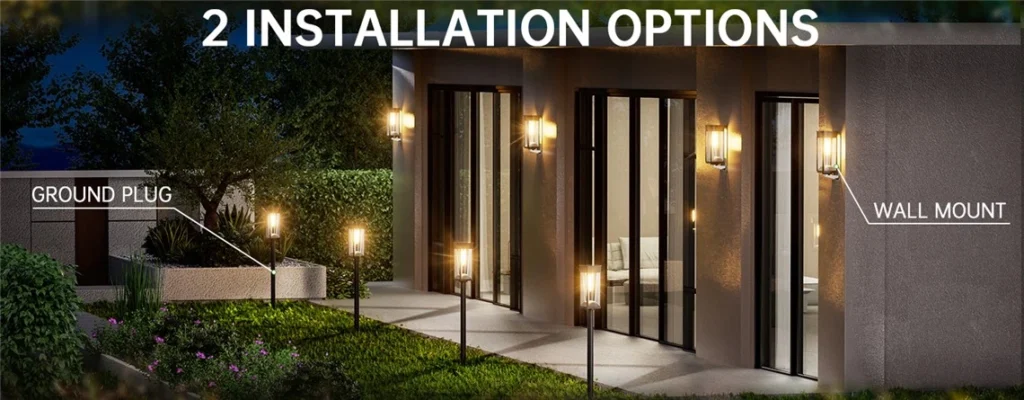
Historic Preservation Approval Checklist
- Research Local Guidelines: Review the specific regulations for your historic district, such as those outlined by the Boston Landmarks Commission for Beacon Hill. These often include restrictions on permanent modifications, materials, and aesthetic compatibility.
- Submit Detailed Proposals: Provide sketches or mockups showing how detachable solar lights, vintage-style solar lamps, or low-voltage solar systems will be installed without altering the property’s structure or appearance.
- Highlight Reversible Modifications: Emphasize that detachable solar lights use non-invasive mounting methods, ensuring no damage to historic facades or landscapes.
- Document Aesthetic Compatibility: Demonstrate that vintage-style solar lamps align with the property’s architectural style, using materials like brass to match colonial or Victorian aesthetics.
- Include Maintenance Plans: Outline how solar lighting will be maintained to preserve its appearance and functionality, reassuring commissions of long-term compliance.
- Engage with Preservation Experts: Consult with local preservation societies or historians to gain support for your lighting plan, increasing the likelihood of approval.
Submitting a thorough application with clear documentation can expedite approval and prevent delays in your project.
Case Studies: Successful Solar Lighting Transformations
Real-world examples illustrate how solar lighting can transform historic properties while meeting preservation standards. Below are two case studies highlighting successful implementations:
Case Study 1: From Non-Compliance to Approval in Beacon Hill
A homeowner in Boston’s Beacon Hill sought to illuminate their colonial-style garden but faced initial rejection from the local preservation commission due to non-compliant wired lighting. By switching to detachable solar lights and vintage-style solar lamps, they redesigned the setup to avoid drilling into the property’s brick facade. The brass-finished lanterns complemented the home’s 18th-century aesthetic, and the detachable mounts ensured no permanent alterations. After resubmitting the proposal with detailed renderings and a maintenance plan, the project was approved and later featured in a local preservation newsletter for its innovative approach.
Case Study 2: Landscape Designer’s Award-Winning Victorian Garden
A landscape designer in a historic Virginia district transformed a Victorian home’s garden using a low-voltage solar system. The system powered a series of vintage-style solar lamps along pathways and detachable solar lights on garden walls, creating a cohesive and elegant design. By presenting the plan as a reversible, low-impact solution, the designer secured approval from the local preservation board. The project won an award from a regional historic preservation society for its balance of functionality, sustainability, and aesthetic harmony.
Additional Tips for Solar Lighting Success
To maximize the effectiveness of solar lighting in historic homes, consider these practical tips:
- Optimize Solar Exposure: Position solar panels in areas with maximum sunlight, such as south-facing locations, to ensure efficient charging. In shaded historic neighborhoods, use detachable panels that can be placed in sunnier spots.
- Blend with Landscaping: Integrate detachable solar lights and vintage-style solar lamps into gardens or hedges to maintain a natural, unobtrusive look that aligns with historic aesthetics.
- Regular Cleaning: Dust or debris on solar panels can reduce efficiency. Clean panels monthly with a soft cloth to maintain optimal performance, especially in urban historic districts with higher pollution levels.
- Consult Professionals: Work with landscape designers or lighting specialists familiar with historic preservation to ensure compliance and enhance design quality.
Conclusion
Solar lighting offers a perfect solution for homeowners and landscape designers in historic districts, combining sustainability, compliance, and aesthetic appeal. Detachable solar lights ensure reversible installations, vintage-style solar lamps complement colonial or Victorian architecture, and low-voltage solar systems bypass electrical restrictions. By following preservation guidelines and learning from successful case studies, you can illuminate your historic property while preserving its heritage. Whether lighting a garden path or accentuating architectural details, these solutions create a harmonious balance of history and modernity.


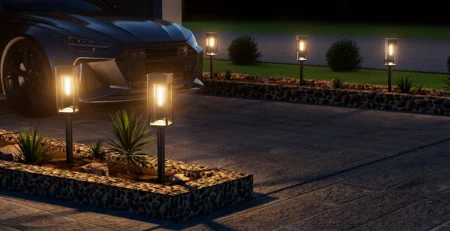
-2-450x231.webp)
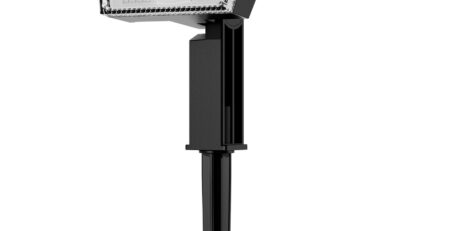
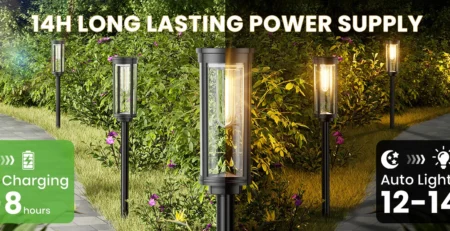
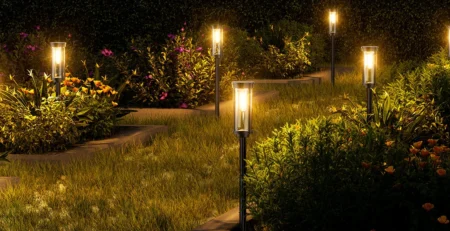
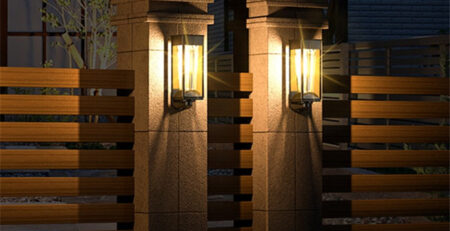
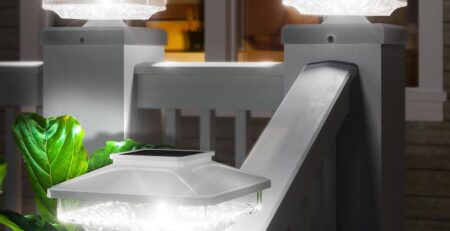
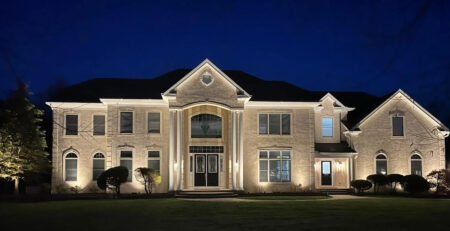
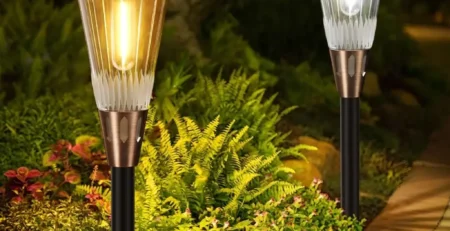
Leave a Reply